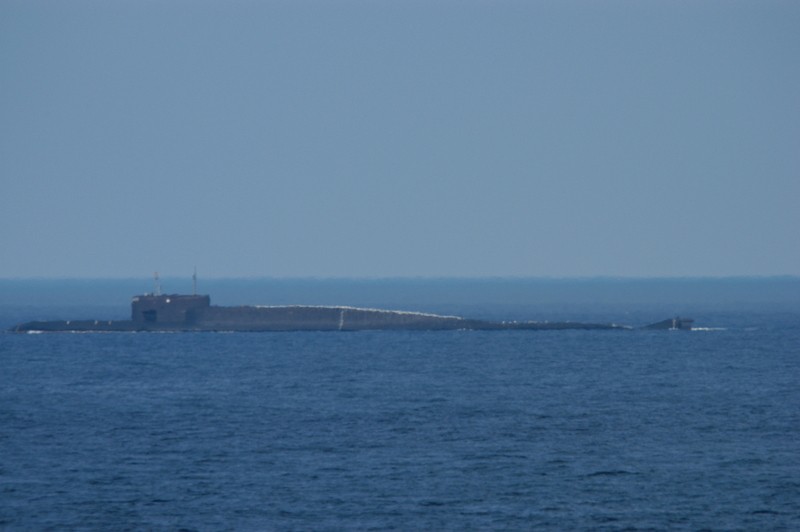A larger portion of Russia’s nukes set be on subs in Arctic waters

Russia is modernizing all three legs of its nuclear triad — strategic bombers, silo-missiles and strategic submarine fleet.
Later this year, the first of the upgraded Borei-class submarines, the Knyaz Vladimir will be floated out, TASS reports. In contrast to the first three Borei-class submarines already in service, which are armed with 16 missiles, the next five submarines under construction are to be armed with 20 ballistic missiles. Each missile carries six nuclear warheads.
With a total of 120 warheads on each vessel, the Russian navy hasn’t seen anything like since the giant Typhoon submarines sailed the Arctic waters during the Cold War.
A new American report now suggests that even more than the known eight Borei-class vessels are to be built.
“Expectations are emerging that Russia will order another four Borei SSBNs for a total fleet of 12 boats, the same number of SSBNs planned by the US Navy,” write Hans M. Kristensen and Robert S. Norris in the report published in the latest issue of Bulletin of the Atomic Scientists.
Kristensen and Norris are known to be some the best analysts on Russian nuclear weapon stockpiles outside the military and intelligence structures.
Four additional Borei-class subs will add up to 480 more warheads to the fleet, and given that Russia and the U.S. stay firm with the New START agreement, the implication is that the strategic importance of the ballistic missile submarine fleet will increase and make it more significant to Russia’s adversaries.
The New START agreement limits the number of warheads deployed on each side to 1,550 by February 5, 2018.
The Borei-class will in the longer run replace today’s fleet of Delta-III (Pacific fleet) and Delta-IV (Northern fleet).
With eight Borei submarines, the number of strategic warheads will be a maximum of 888; three with 16 missiles and five with 20 missiles. Given that the information about additional four Borei subs with 480 warheads is correct, the total number would then be as much as 1,388. In practice, not all Borei’s will be deployed at the same time due to maintenance and repair work. Also, some of the missiles are likely to carry dummy warheads for test-launchings.
However, as least 1,000 of Russia’s strategic nuclear warheads could theoretically be deployed at sea at any time.
In any case, the number of Russia’s strategic nuclear warheads deployed on submarines is likely to be substantially more than today.
The Northern fleet’s strategic missile submarines are based at Gadzhievo northwest of Murmansk on the coast of the Barents Sea.
Kristensen and Norris also warns that the Northern fleet’s new multi-purpose submarines will be armed with nuclear weapons.
“Naval modernization programs include work on the next class of nuclear attack submarines, the Severodvinsk. The first of these boats entered service in 2015 and is thought to be equipped with a nuclear version of the Caliber sea launched cruise missile,” the report reads.
Also, the Severodvinsk-class will be able to deliver SS-N-16 nuclear anti-submarine rockets, as well as nuclear torpedoes.
Nonstrategic nuclear weapons, like the ones said to be carried by the Severodvinsk-class, are not counted for in the New START agreement and will come in addition to the ballistic missile warheads.
The Russian Navy’s only operating Severodvinsk-class submarines are today based in the Litsa fjord, some 55 kilometers (about 35 miles) from the border with Norway in the north. The second Kazan-class vessel will start being transferred to the Navy later this year, according to the TASS article.
This autumn marks the 30th anniversary since Mikhail Gorbachev’s famous Murmansk speech where he called for a nuclear-free zone in Northern Europe. That vision seems further away today than anyone could imagine during Gorbachev’s last years in power of the Soviet Union.